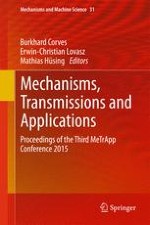This volume deals with topics such as mechanism and machine design, biomechanics and medical engineering, gears, mechanical transmissions, mechatronics, computational and experimental methods, dynamics of mechanisms and machines, micromechanisms and microactuators, and history of mechanisms and transmissions.
Following MeTrApp 2011 and 2013, held under the auspices of the IFToMM, these proceedings of the 3rd Conference on Mechanisms, Transmissions and Applications offer a platform for original research presentations for researchers, scientists, industry experts and students in the fields of mechanisms and transmissions with special emphasis on industrial applications in order to stimulate the exchange of new and innovative ideas.
